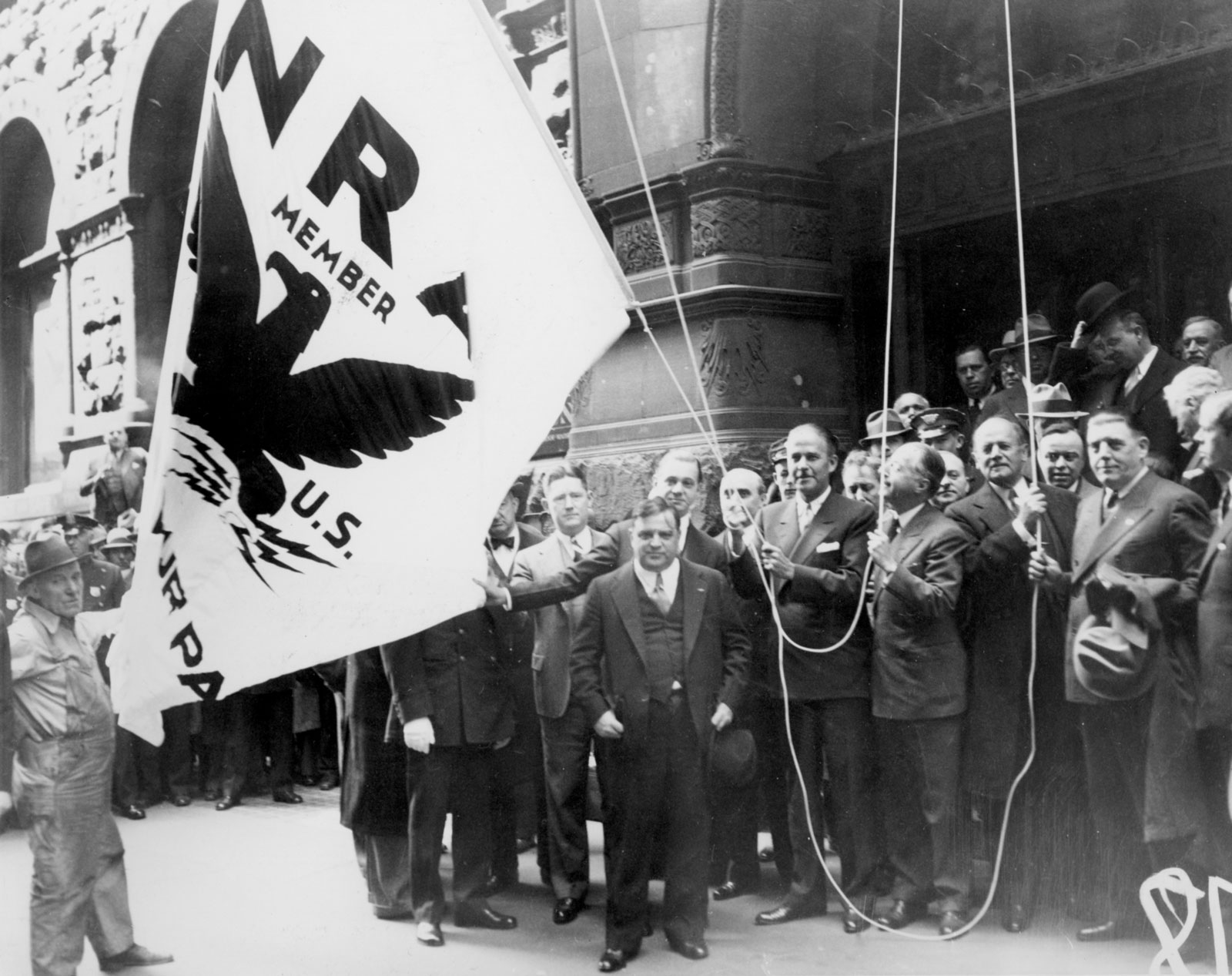
Raising the New Deal Flag in New York City
Fiorello La Guardia at the formal raising of the NRA flag outside the New York headquarters of the National Recovery Administration, April 1934.
Photo Credit: Encyclopedia Brittanica
Two hundred New Yorkers gathered at the Center for Architecture on May 7 to kick off a Living New Deal initiative to familiarize New Yorkers with the New Deal’s vast imprint on their city.
The reception and panel discussion, “A New Deal for New York City: Looking Back, Looking Forward,” were co-sponsored by the Museum of the City of New York, the American Institute of Architects New York Chapter, Planners Network, Historic Districts Council, National Jobs for All Network, City Lore, FDR Library, Gotham Center for New York City History, and Roosevelt House Public Policy Institute at Hunter College.
Welcoming the audience, Phoebe Roosevelt, great-granddaughter of Franklin and Eleanor, expressed gratitude for the remarkable men and women—including her grandparents—who championed the “great experiment we call the New Deal.” She also praised the citizens who “went to the voting booth to give FDR and Congress the mandate for action.”
Keynote speaker Kevin Baker, whose April cover story in Harper’s,“We Can Do It Again,” masterfully reviewed New Deal 1.0 in light of calls for a Green New Deal, commented, “What is most surprising about the city today is not how well it’s doing but how little of its old social dysfunction it has managed to shed,” but which the Roosevelt administration sought to address eighty years ago.
A panel of four, including writer Nick Taylor; Living New Deal’s founder Gray Brechin; Marta Gutman, professor of architectural and urban history at City College of New York; and New York City Deputy Mayor Phillip Thompson, elaborated on Baker’s remarks.
Speaking for the city, Thompson fully endorsed the idea of a policy agenda modeled on the New Deal that would, once again, tackle the city’s social problems while rectifying past injustices via a “Greener” New Deal.
All agreed that the first step toward that goal is making people aware of the enormous legacy the New Deal left to them by commemorating through signage, tours, and educational events, its ubiquitous presence throughout New York City.
The audience was also treated to a short film, “A Better New York City,” produced by the Works Progress Administration (WPA) in 1937. See it here.



